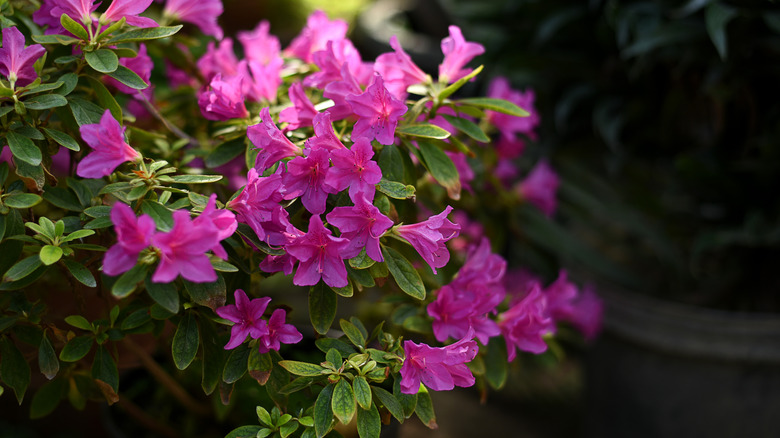If you’re thinking of creating a charming and functional garden, you might want to consider combining your blueberry bushes with other flowering shrubs like azaleas, rhododendrons, and lilacs. Originating from North America, blueberry bushes are more than just berry producers. They’re a commitment that requires a multifaceted care approach, including regular pruning, watering, and fertilizing. Each of these actions plays a vital role in ensuring the health and productivity of your plants. When it comes to sunlight, they need full exposure for at least six hours per day, but too much heat can also be a concern. Mulching around the base also helps retain moisture and regulate soil temperature.
Now, let’s connect the dots back to companion plants. Knowing your blueberry bushes’ specific needs and characteristics gives you a leg up in selecting the right flowering shrubs to plant alongside them. When pairing with azaleas, rhododendrons, and lilacs, it helps to know that acidic soil is the playground where all three plants love to hang out. Blueberry bushes also thrive best in well-drained, acidic soil with a pH between 3.8 and 5.5. When grown together with the other plants, this creates a harmonious environment that’s advantageous for all involved. You’re not constantly adjusting soil pH levels, which saves you time and effort. In short, you’re also creating a synergistic environment where each plant supports the other in some way—be it through soil acidity, pollination, or even providing some much-needed shade.
The symbiosis of rhododendrons and azaleas

Regarding companion planting, rhododendrons and azaleas sit at the top of the list. As mentioned, the acidic environment that blueberries crave is also a haven for these companion plants. But it gets even better during the blooming season. Azaleas, rhododendrons, and blueberry bushes have synchronized bloom calendars — this is a powerful attractant for various pollinators. Pollinators such as bees, butterflies, and hummingbirds are more likely to visit a garden where multiple types of flowers bloom concurrently. This is advantageous because increased pollinator activity directly correlates with higher yields for your blueberries.
Now, here’s an interesting twist: your mature blueberry bushes don’t just sit there soaking up the benefits. They actively contribute to the well-being of their plant neighbors, particularly the younger rhododendron plants. If you’ve noticed that rhododendrons can sometimes struggle with too much sun exposure, especially when they’re young, you’ll appreciate this aspect. Blueberry bushes, with their dense foliage, serve as a natural sunblock for these tender rhododendron shoots. This protection encourages healthier growth and can even prevent issues like leaf scorch. So, what you have here is a genuinely symbiotic relationship. Your blueberries act like the older siblings in a large family, looking out for their younger, more vulnerable counterparts. It’s an interconnected support system that makes your garden not just a series of isolated plants but a thriving, interdependent ecosystem.
Lilacs: the multifaceted companion
Lilacs bring more to the table than just their intoxicating fragrance and stunning blossoms; they act as essential team players in your garden. You’re setting up a win-win scenario when you plant lilacs near your blueberry bushes. They attract pollinators like bees and butterflies. But there’s more. Lilacs bring a practical edge to this relationship, especially when the heat cranks up. Sure, blueberry bushes love the sun, but too much of a good thing can lead to heat stress. By partially shading your blueberry bushes, lilacs serve as a natural temperature control system, helping to prevent any heat-induced setbacks that could impact your berry harvest.
Lastly, let’s talk about resilience. Lilacs are not divas; they’re fairly easy-going regarding soil conditions. This means less fuss and worry. You won’t need to micro-manage the soil conditions for lilacs as you might for other plants. Their adaptability makes them a straightforward, low-maintenance choice that complements the specific needs of your blueberry bushes. So, in essence, you’re adding beauty, utility, and ease to your garden all in one go when you pair lilacs with blueberries. It’s a multitasking marvel that benefits both the eye and the palate.
